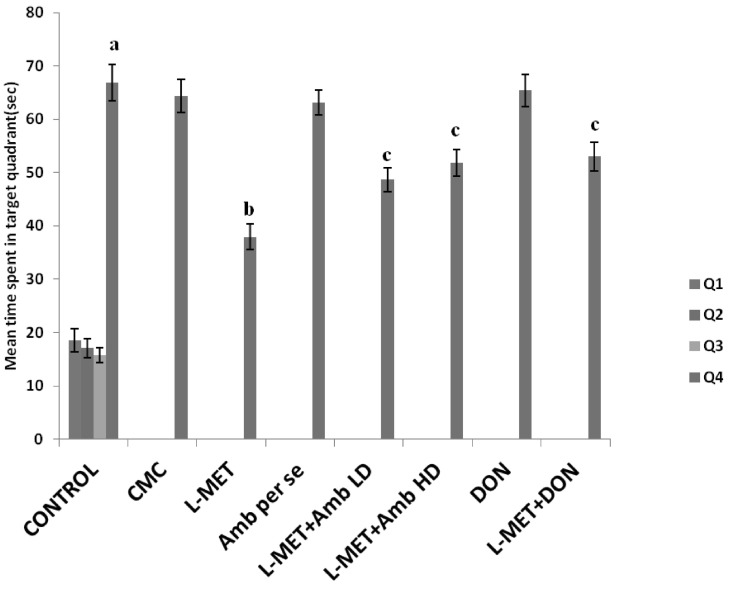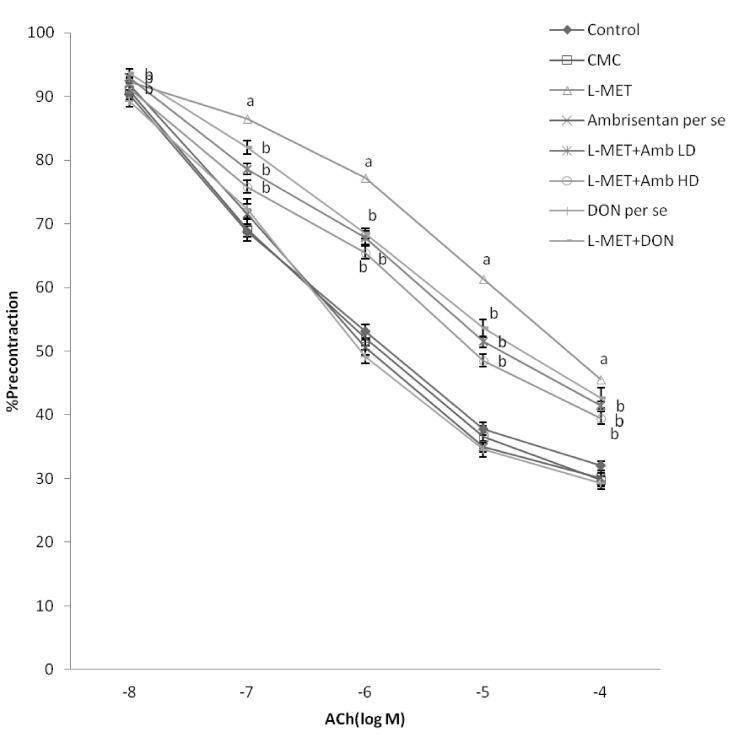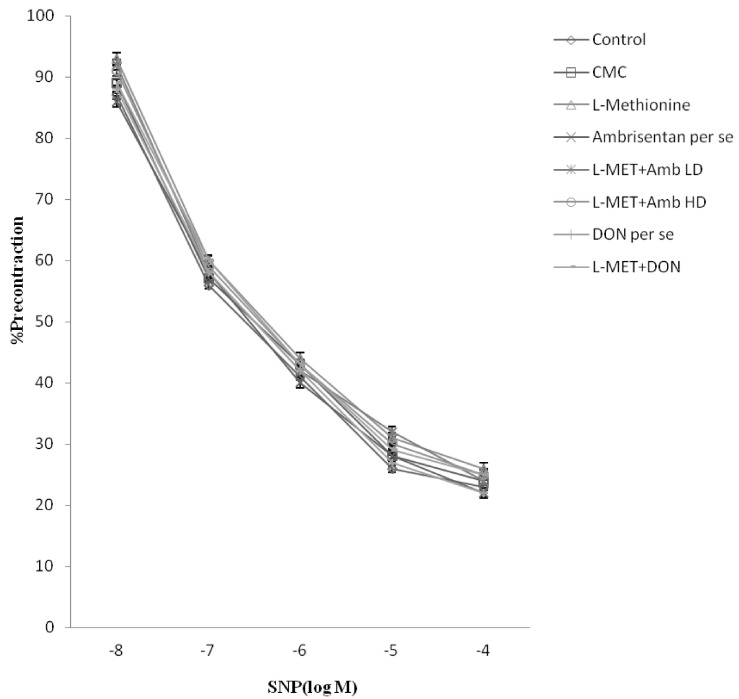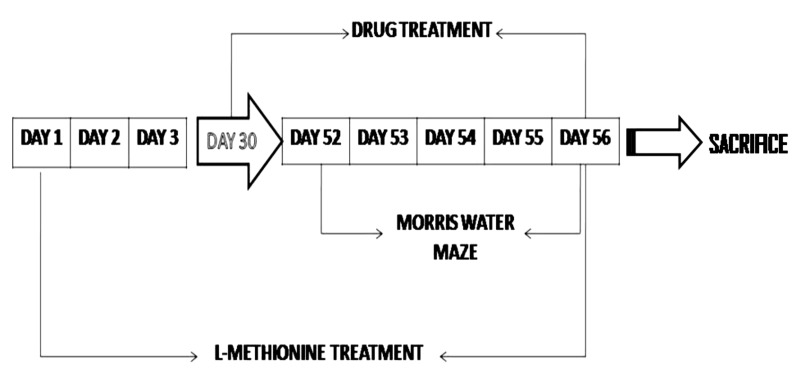1. Pieper MJ, van Dalen-Kok AH, Francke AL, van der Steen JT, Scherder EJ, Husebø BS, Achterberg WP. Interventions targeting pain or behaviour in dementia: A systematic review. Ageing Res Rev. 2013; 12:1042–1055. PMID:
23727161.

2. Han HS, Jang JH, Jang JH, Choi JS, Kim YJ, Lee C, Lim SH, Lee HK, Lee J. Water extract of Triticum aestivum L. and its components demonstrate protective effect in a model of vascular dementia. J Med Food. 2010; 13:572–578. PMID:
20521983.

3. Sharma B, Singh N. Attenuation of vascular dementia by sodium butyrate in streptozotocin diabetic rats. Psychopharmacology (Berl). 2011; 215:677–687. PMID:
21225418.

4. Prince M, Bryce R, Albanese E, Wimo A, Ribeiro W, Ferri CP. The global prevalence of dementia: a systematic review and metaanalysis. Alzheimers Dement. 2013; 9:63–75. PMID:
23305823.

5. Catindig JA, Venketasubramanian N, Ikram MK, Chen C. Epidemiology of dementia in Asia: insights on prevalence, trends and novel risk factors. J Neurol Sci. 2012; 321:11–16. PMID:
22877510.

6. Bickel H, Ander KH, Brönner M, Etgen T, Gnahn H, Gotzler O, Poppert H, Pürner K, Sander D, Förstl H. Reduction of long-term care dependence after an 8-year primary care prevention program for stroke and dementia: the INVADE trial. J Am Heart Assoc. 2012; 1:e000786. PMID:
23130154.

7. Igoumenou A, Ebmeier KP. Diagnosing and managing vascular dementia. Practitioner. 2012; 256:13–16. 2PMID:
22720454.
8. Lüders S, Stöve S, Schrader J. Prevention of vascular dementia. Evidence and practice. Internist (Berl). 2012; 53:223–231. PMID:
22119909.
9. Peters R. Blood pressure, smoking and alcohol use, association with vascular dementia. Exp Gerontol. 2012; 47:865–872. PMID:
22664578.

10. Korczyn AD, Vakhapova V, Grinberg LT. Vascular dementia. J Neurol Sci. 2012; 322:2–10. PMID:
22575403.

11. Fei M, Yan Ping Z, Ru Juan M, Ning Ning L, Lin G. Risk factors for dementia with type 2 diabetes mellitus among elderly people in China. Age Ageing. 2013; 42:398–400. PMID:
23299282.

12. Koladiya RU, Jaggi AS, Singh N, Sharma BK. Ameliorative role of Atorvastatin and Pitavastatin in L-Methionine induced vascular dementia in rats. BMC Pharmacol. 2008; 8:14. PMID:
18691432.

13. Sharma B, Singh N. Salutary effect of NFκB inhibitor and folacin in hyperhomocysteinemia-hyperlipidemia induced vascular dementia. Prog Neuropsychopharmacol Biol Psychiatry. 2012; 38:207–215. PMID:
22510463.

14. Vaniotis G, Glazkova I, Merlen C, Smith C, Villeneuve LR, Chatenet D, Therien M, Fournier A, Tadevosyan A, Trieu P, Nattel S, Hébert TE, Allen BG. Regulation of cardiac nitric oxide signaling by nuclear β-adrenergic and endothelin receptors. J Mol Cell Cardiol. 2013; 62:58–68. PMID:
23684854.

15. Burnier M, Forni V. Endothelin receptor antagonists: a place in the management of essential hypertension? Nephrol Dial Transplant. 2012; 27:865–868. PMID:
22311858.

16. Zhen P, Zhao Q, Hou D, Liu T, Jiang D, Duan J, Lu L, Wang W. Genistein attenuates vascular endothelial impairment in ovariectomized hyperhomocysteinemic rats. J Biomed Biotechnol. 2012; 2012:730462. PMID:
23226943.

17. Norsidah KZ, Asmadi AY, Azizi A, Faizah O, Kamisah Y. Palm tocotrienol-rich fraction improves vascular proatherosclerotic changes in hyperhomocysteinemic rats. Evid Based Complement Alternat Med. 2013; 2013:976967. PMID:
23573162.

18. Knobloch J, Feldmann M, Wahl C, Jungck D, Behr J, Stoelben E, Koch A. Endothelin receptor antagonists attenuate the inflammatory response of human pulmonary vascular smooth muscle cells to bacterial endotoxin. J Pharmacol Exp Ther. 2013; 346:290–299. PMID:
23720457.

19. Lisk C, McCord J, Bose S, Sullivan T, Loomis Z, Nozik-Grayck E, Schroeder T, Hamilton K, Irwin DC. Nrf2 activation: a potential strategy for the prevention of acute mountain sickness. Free Radic Biol Med. 2013; 63:264–273. PMID:
23722164.

20. Day RW, Brockmeyer DL, Feola GP. Safe treatment of pulmonary hypertension with bosentan in a patient with moyamoya disease and cerebral ischemia. J Child Neurol. 2010; 25:504–507. PMID:
19808994.

21. Moldes O, Sobrino T, Blanco M, Agulla J, Barral D, Ramos-Cabrer P, Castillo J. Neuroprotection afforded by antagonists of endothelin-1 receptors in experimental stroke. Neuropharmacology. 2012; 63:1279–1285. PMID:
22975409.

22. Song JN, Yan WT, An JY, Hao GS, Guo XY, Zhang M, Li Y, Li DD, Sun P. Potential contribution of SOCC to cerebral vasospasm after experimental subarachnoid hemorrhage in rats. Brain Res. 2013; 1517:93–103. PMID:
23542055.

23. Palmer J, Love S. Endothelin receptor antagonists: potential in Alzheimer's disease. Pharmacol Res. 2011; 63:525–531. PMID:
21193044.

24. Lee B, Sur B, Shim I, Lee H, Hahm DH. Phellodendron amurense and its major alkaloid compound, berberine ameliorates scopolamine-induced neuronal impairment and memory dysfunction in rats. Korean J Physiol Pharmacol. 2012; 16:79–89. PMID:
22563252.
25. Kumar R, Jaggi AS, Singh N. Effects of erythropoietin on memory deficits and brain oxidative stress in the mouse models of dementia. Korean J Physiol Pharmacol. 2010; 14:345–352. PMID:
21165335.

26. Kim SJ, Lee JH, Chung HS, Song JH, Ha J, Bae H. Neuroprotective Effects of AMP-Activated protein kinase on scopolamine induced memory impairment. Korean J Physiol Pharmacol. 2013; 17:331–338. PMID:
23946693.

27. Dimitrova KR, DeGroot KW, Pacquing AM, Suyderhoud JP, Pirovic EA, Munro TJ, Wieneke JA, Myers AK, Kim YD. Estradiol prevents homocysteine-induced endothelial injury in male rats. Cardiovasc Res. 2002; 53:589–596. PMID:
11861029.

28. Sastry KV, Moudgal RP, Mohan J, Tyagi JS, Rao GS. Spectrophotometric determination of serum nitrite and nitrate by copper-cadmium alloy. Anal Biochem. 2002; 306:79–82. PMID:
12069417.

29. ELlman GL, Courtney KD, Andres V Jr, Feather-Stone RM. A new and rapid colorimetric determination of acetylcholinesterase activity. Biochem Pharmacol. 1961; 7:88–95. PMID:
13726518.

30. Ohkawa H, Ohishi N, Yagi K. Assay for lipid peroxides in animal tissues by thiobarbituric acid reaction. Anal Biochem. 1979; 95:351–358. PMID:
36810.

31. Beutler E, Duron O, Kelly BM. Improved method for the determination of blood glutathione. J Lab Clin Med. 1963; 61:882–888. PMID:
13967893.
32. Lowry OH, Rosebrough NJ, Farr AL, Randall RJ. Protein measurement with the Folin phenol reagent. J Biol Chem. 1951; 193:265–275. PMID:
14907713.

33. Gulati P, Muthuraman A, Jaggi AS, Singh N. Neuroprotective effect of gadolinium: a stretch-activated calcium channel blocker in mouse model of ischemia-reperfusion injury. Naunyn Schmiedebergs Arch Pharmacol. 2013; 386:255–264. PMID:
23229582.

34. Dong Z, Bai Y, Wu X, Li H, Gong B, Howland JG, Huang Y, He W, Li T, Wang YT. Hippocampal long-term depression mediates spatial reversal learning in the Morris water maze. Neuropharmacology. 2013; 64:65–73. PMID:
22732443.

35. Hashemi Nosrat Abadi T, Vaghef L, Babri S, Mahmood-Alilo M, Beirami M. Effects of different exercise protocols on ethanol-induced spatial memory impairment in adult male rats. Alcohol. 2013; 47:309–316. PMID:
23683528.

36. Sudduth TL, Powell DK, Smith CD, Greenstein A, Wilcock DM. Induction of hyperhomocysteinemia models vascular dementia by induction of cerebral microhemorrhages and neuroinflammation. J Cereb Blood Flow Metab. 2013; 33:708–715. PMID:
23361394.

37. Tlili A, Jacobs F, de Koning L, Mohamed S, Bui LC, Dairou J, Belin N, Ducros V, Dubois T, Paul JL, Delabar JM, De Geest B, Janel N. Hepatocyte-specific Dyrk1a gene transfer rescues plasma apolipoprotein A-I levels and aortic Akt/GSK3 pathways in hyperhomocysteinemic mice. Biochim Biophys Acta. 2013; 1832:718–728. PMID:
23429073.

38. Wang X, Cui L, Joseph J, Jiang B, Pimental D, Handy DE, Liao R, Loscalzo J. Homocysteine induces cardiomyocyte dysfunction and apoptosis through p38 MAPK-mediated increase in oxidant stress. J Mol Cell Cardiol. 2012; 52:753–760. PMID:
22227328.

39. Asif M, Soiza RL, McEvoy M, Mangoni AA. Asymmetric dimethylarginine: a possible link between vascular disease and dementia. Curr Alzheimer Res. 2013; 10:347–356. PMID:
23036019.

40. Rodionov RN, Dayoub H, Lynch CM, Wilson KM, Stevens JW, Murry DJ, Kimoto M, Arning E, Bottiglieri T, Cooke JP, Baumbach GL, Faraci FM, Lentz SR. Overexpression of dimethylarginine dimethylaminohydrolase protects against cerebral vascular effects of hyperhomocysteinemia. Circ Res. 2010; 106:551–558. PMID:
20019334.

41. Rhodehouse BC, Erickson MA, Banks WA, Bearden SE. Hyperhomocysteinemic mice show cognitive impairment without features of Alzheimer's disease phenotype. J Alzheimers Dis. 2013; 35:59–66. PMID:
23334704.

42. Scherer EB, Loureiro SO, Vuaden FC, Schmitz F, Kolling J, Siebert C, Savio LE, Schweinberger BM, Bogo MR, Bonan CD, Wyse AT. Mild hyperhomocysteinemia reduces the activity and immunocontent, but does not alter the gene expression, of catalytic α subunits of cerebral Na
+,K
+-ATPase. Mol Cell Biochem. 2013; 378:91–97. PMID:
23467881.
43. Emeksiz HC, Serdaroglu A, Biberoglu G, Gulbahar O, Arhan E, Cansu A, Arga M, Hasanoglu A. Assessment of atherosclerosis risk due to the homocysteine-asymmetric dimethylarginine-nitric oxide cascade in children taking antiepileptic drugs. Seizure. 2013; 22:124–127. PMID:
23266348.

44. Schaub C, Uebachs M, Beck H, Linnebank M. Chronic homocysteine exposure causes changes in the intrinsic electrophysiological properties of cultured hippocampal neurons. Exp Brain Res. 2013; 225:527–534. PMID:
23307157.

45. Ho YS, Yu MS, Yang XF, So KF, Yuen WH, Chang RC. Neuroprotective effects of polysaccharides from wolfberry, the fruits of Lycium barbarum, against homocysteine-induced toxicity in rat cortical neurons. J Alzheimers Dis. 2010; 19:813–827. PMID:
20157238.

46. Potts LB, Ren Y, Lu G, Kuo E, Ngo E, Kuo L, Hein TW. Constriction of retinal arterioles to endothelin-1: requisite role of rho kinase independent of protein kinase C and L-type calcium channels. Invest Ophthalmol Vis Sci. 2012; 53:2904–2912. PMID:
22427601.

47. Bae EH, Kim SW. Changes in endothelin receptor type B and neuronal nitric oxide synthase in puromycin aminonucleoside-induced nephrotic syndrome. Korean J Physiol Pharmacol. 2010; 14:223–228. PMID:
20827336.

48. Ohkita M, Tawa M, Kitada K, Matsumura Y. Pathophysiological roles of endothelin receptors in cardiovascular diseases. J Pharmacol Sci. 2012; 119:302–313. PMID:
22863667.

49. Guo QH, Tian YL, Wang Z, Li AY, Ma ZH, Guo YJ, Weiss JW, Ji ES, Chu L. Endothelin receptors in augmented vasoconstrictor responses to endothelin-1 in chronic intermittent hypoxia. Clin Exp Pharmacol Physiol. 2013; 40:449–457. PMID:
23662699.

50. Wang Z, Li AY, Guo QH, Zhang JP, An Q, Guo YJ, Chu L, Weiss JW, Ji ES. Effects of cyclic intermittent hypoxia on ET-1 responsiveness and endothelial dysfunction of pulmonary arteries in rats. PLoS One. 2013; 8:e58078. PMID:
23555567.

51. de Andrade CR, Leite PF, Montezano AC, Casolari DA, Yogi A, Tostes RC, Haddad R, Eberlin MN, Laurindo FR, de Souza HP, Correa FM, de Oliveira AM. Increased endothelin-1 reactivity and endothelial dysfunction in carotid arteries from rats with hyperhomocysteinemia. Br J Pharmacol. 2009; 157:568–580. PMID:
19371338.

52. Choi S, Na HY, Kim JA, Cho SE, Suh SH. Contradictory effects of superoxide and hydrogen peroxide on KCa3.1 in human endothelial cells. Korean J Physiol Pharmacol. 2013; 17:181–187. PMID:
23776393.

53. Lin CC, Hsieh HL, Shih RH, Chi PL, Cheng SE, Yang CM. Up-regulation of COX-2/PGE2 by endothelin-1 via MAPK-d ependent NF-κB pathway in mouse brain microvascular endothelial cells. Cell Commun Signal. 2013; 11:8. PMID:
23343326.

54. Singh B, Sharma B, Jaggi AS, Singh N. Attenuating effect of lisinopril and telmisartan in intracerebroventricular streptozotocin induced experimental dementia of Alzheimer's disease type: possible involvement of PPAR-γ agonistic property. J Renin Angiotensin Aldosterone Syst. 2013; 14:124–136. PMID:
23060470.

55. Sharma B, Singh N. Defensive effect of natrium diethyldithiocarbamate trihydrate (NDDCT) and lisinopril in DOCA-salt hypertension-induced vascular dementia in rats. Psychopharmacology (Berl). 2012; 223:307–317. PMID:
22526544.

56. Sharma B, Singh N. Pharmacological inhibition of inducible nitric oxide synthase (iNOS) and nicotinamide adenine dinucleotide phosphate (NADPH) oxidase, convalesce behavior and biochemistry of hypertension induced vascular dementia in rats. Pharmacol Biochem Behav. 2013; 103:821–830. PMID:
23201648.











 PDF
PDF ePub
ePub Citation
Citation Print
Print




 XML Download
XML Download